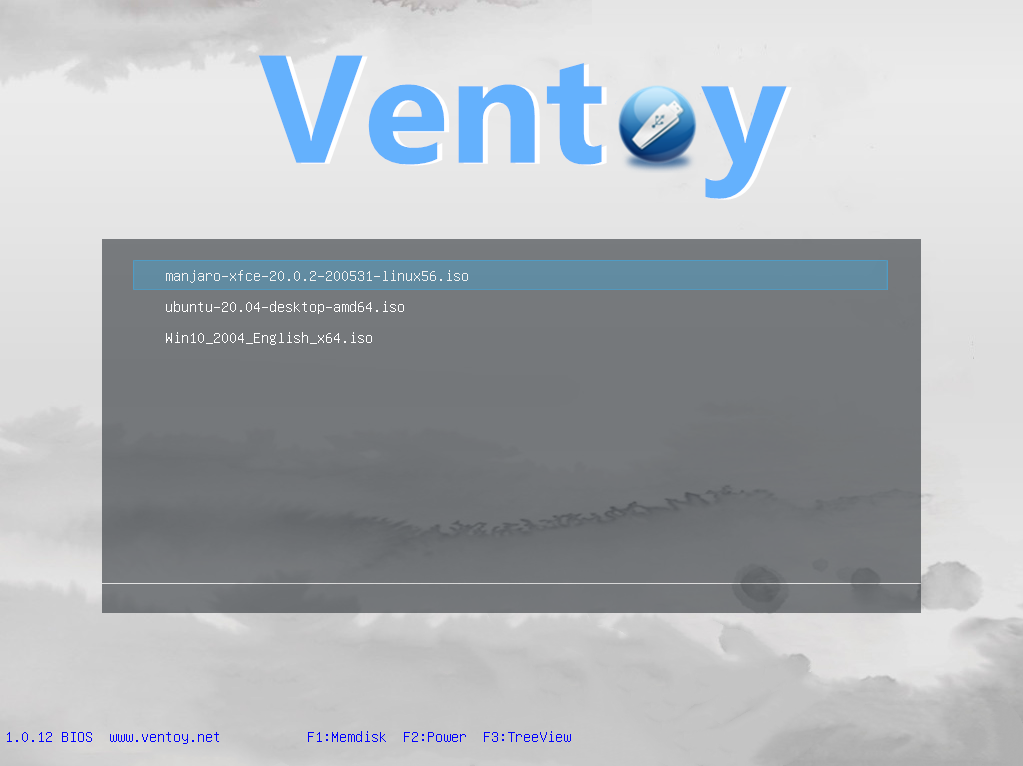
 Download ventoy-x.x.xx-windows.zip (e.g. Here are quick installation steps how to install and use Ventoy, assuming you will be using Windows 10/11 (x86) to burn the bootable image of Ventoy on a USB disk (Linux is also supported): Then flashing failed many times for that particular drive and Ultimately I landed on Ventoy and it worked like a charm.As discussed in a previous article, Ventoy is a tool created for systems engineers or anyone who frequently performs bare-metal OS installs. Finally I made my brother flash it for me via rufus since he uses windows. I've gone through the exact same scenario as you, I was in zorin OS lite and I have tried the methods you have mentioned in the question and none of them worked for me too. If you couldn't follow my guidance in this method, here is the website's guide. NOTE: Windows 7 iso might not work as per my experience any other iso mentioned over here will definitely work. Then whenever you boot from ventoy you can choose from multiple different. You can also put multiple iso files if you have enough storage. after copying is finished boot from ventoy usb and select the desired iso file and you're good to go. Now copy the iso image file and paste it in Ventoy drive.
Download ventoy-x.x.xx-windows.zip (e.g. Here are quick installation steps how to install and use Ventoy, assuming you will be using Windows 10/11 (x86) to burn the bootable image of Ventoy on a USB disk (Linux is also supported): Then flashing failed many times for that particular drive and Ultimately I landed on Ventoy and it worked like a charm.As discussed in a previous article, Ventoy is a tool created for systems engineers or anyone who frequently performs bare-metal OS installs. Finally I made my brother flash it for me via rufus since he uses windows. I've gone through the exact same scenario as you, I was in zorin OS lite and I have tried the methods you have mentioned in the question and none of them worked for me too. If you couldn't follow my guidance in this method, here is the website's guide. NOTE: Windows 7 iso might not work as per my experience any other iso mentioned over here will definitely work. Then whenever you boot from ventoy you can choose from multiple different. You can also put multiple iso files if you have enough storage. after copying is finished boot from ventoy usb and select the desired iso file and you're good to go. Now copy the iso image file and paste it in Ventoy drive.  Now you can see that a drive named "Ventoy" has been mounted. Then go to '' (as it is already mentioned in terminal after running VentoyWeb.sh, Warning do not click ctrl+C yet). Open terminal in the ventoy folder and enter the following command:. Extract the zip content of the file you just downloaded. Download latest release of ventoy for linux ( you can find the latest release here). You can use ventoy and it is very easy to setup. NOTE: This method might not always work for " windows" image files. In 'bs= ' you can put any amount but I recommend to keep it 4M.
Now you can see that a drive named "Ventoy" has been mounted. Then go to '' (as it is already mentioned in terminal after running VentoyWeb.sh, Warning do not click ctrl+C yet). Open terminal in the ventoy folder and enter the following command:. Extract the zip content of the file you just downloaded. Download latest release of ventoy for linux ( you can find the latest release here). You can use ventoy and it is very easy to setup. NOTE: This method might not always work for " windows" image files. In 'bs= ' you can put any amount but I recommend to keep it 4M. 
In 'if= ' put the file path for the iso image. In place of sdx put your drive label(can be identified with command lsblk ). Sudo dd bs=4M if=/path-to-image/image-name.iso of=/dev/sdx status=progress & sync You can use the dd command to write the image to the disk.

You can follow either of the methods mentioned below according to your convenience (I recommend No.







 0 kommentar(er)
0 kommentar(er)
